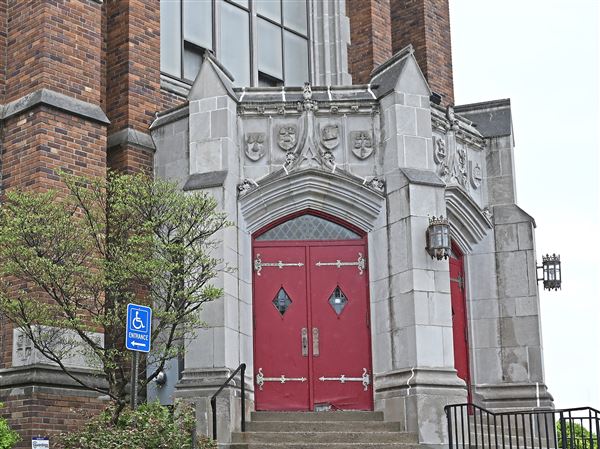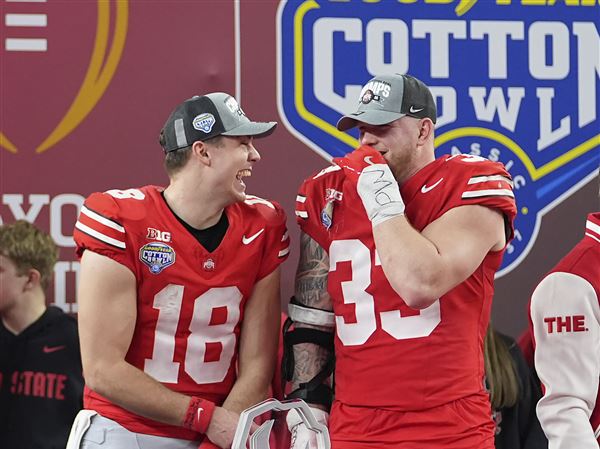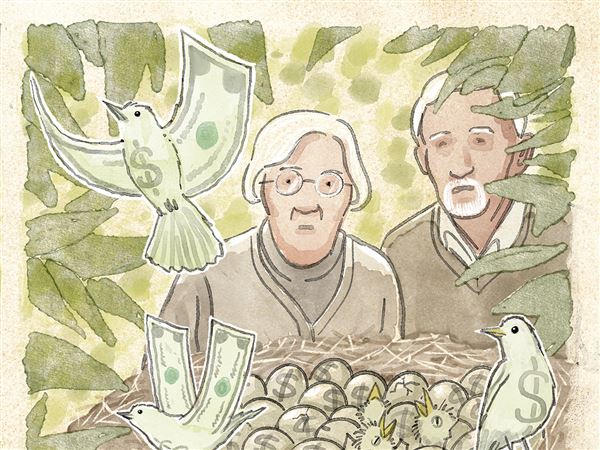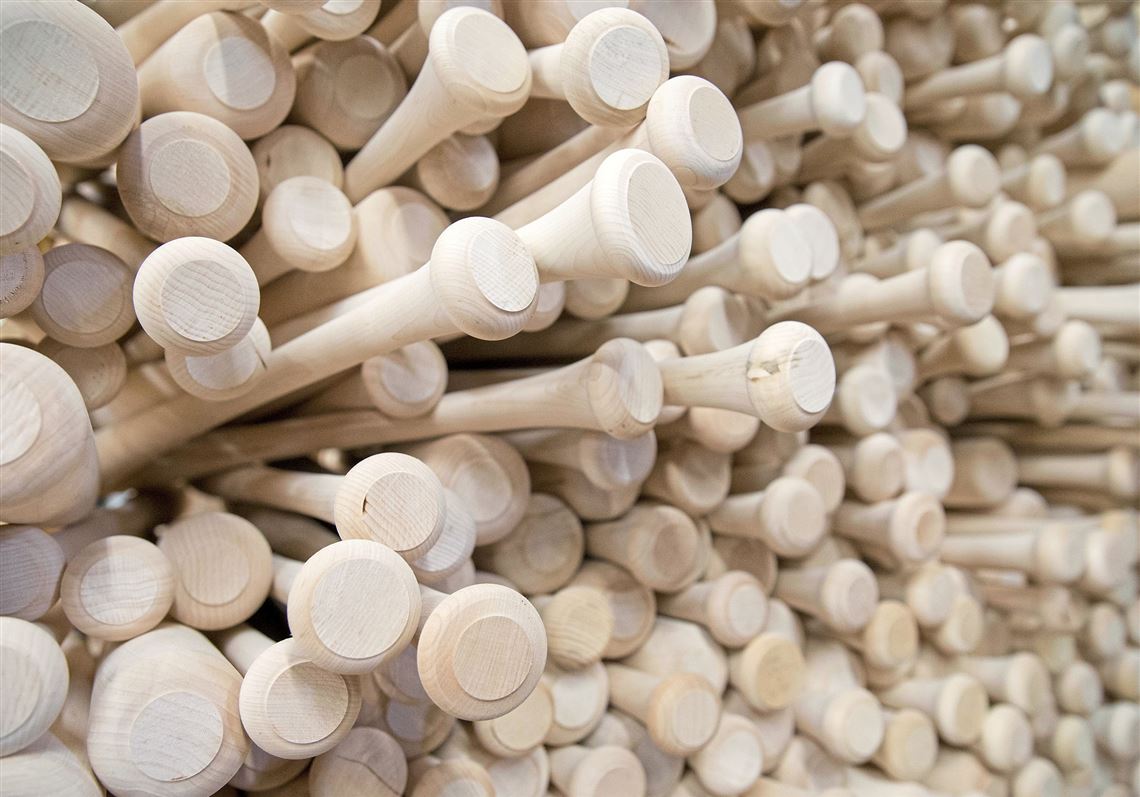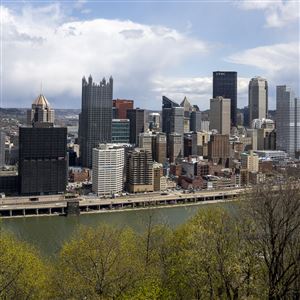Most of the world knows Western Pennsylvania and the region around it as the Rust Belt, forged for generations by steel and coal.
But baseball bat-makers and Major League Baseball players know the strip of land straddling northern Pennsylvania and southern New York as the Hardwood Belt — a slice of hilly forest where the white ash and hard maple trees used in the majority of MLB bats grow.
“It’s the right mix of weight, density and hardness, and that’s the strip from Route 80 in Pennsylvania north up to Route 86 — that strip, that borderline between Pennsylvania and New York,” said Brian Boltz, general manager of Larimer & Norton, the sawmills that supply wood for Louisville Slugger.
For generations, the Commonwealth’s forests have produced the ash and, more recently, maple used in wooden baseball bats. Even as mills consolidated, the 2008 recession dinged the industry and an invasive bug chomped away at the state’s ash population, bat manufacturers still seek lumber from Pennsylvania forests or make the finished products here.
“That has to do with, I guess, the growth of the tree, the soil, the climate, the hills of Pennsylvania,” said Jack Hillerich, a fourth-generation bat-maker and chairman of Hillerich & Bradsby, which produces Louisville Sluggers. “You don’t find these beautiful hardwood forests on flat land.”
Credit the climate in Pennsylvania: Farther south or north, the trees grow too slowly or quickly, resulting in wood that is overly soft or hard, Boltz said. The area’s long, lake-effect winters, mineral-rich soil, mountainous terrain and older forests produce high-quality lumber, said D. Wayne Bender, executive director of the Pennsylvania Hardwoods Development Council.
“The climate of Pennsylvania is different than anywhere else in the world,” said Kevin Gnacinski, chief of production at BWP Bats in Jefferson County, about a two-hour drive north of Pittsburgh. “It grows different, comes up harder, a little bit more dense.”
Uniontown native Jack Marucci, co-founder of Marucci Sports, started to make bats in 2002, when he couldn’t find a wooden bat small enough for his young son. Now, the Louisiana-based company is the No. 1 supplier of wooden baseball bats to MLB players, according to Forbes.
When he started making bats, Marucci, director of athletic training at Louisiana State University, had no idea the best lumber was a drive away from his hometown — and that Mr. Hess’ wood shop class at Laurel Highlands High School would prove to be the most helpful course he ever took.
“Eighth grade wood shop,” he said, “paid off.”
In the dead ball era, baseball bats were made from hickory, but as the game evolved to become more hitter-friendly, batters started to prize bat speed and sought lighter alternatives, Hillerich said. In the 1920s, bat-makers turned to ash — the go-to wood for various sporting goods, from lacrosse sticks to water skis — and Hillerich & Bradsby started buying in Pennsylvania in the 1930s.
After buying Larimer & Norton in 1955, the head of Hillerich & Bradsby’s timber operations drove around in a two-door Chevrolet to set up mills in places like Moscow, Pa., and Shandaken, N.Y. In 1970, before aluminum bats came onto the scene, the company’s 11 mills in New York and Pennsylvania were producing 6 million billets (chunks of wood for baseball bats) every year. Now, it has two mills, both in Pennsylvania.
The bat industry has stayed here ever since, despite various challenges from nature and humankind. The arrival in Cranberry a decade ago of the invasive emerald ash borer, a small green beetle from Asia, has wreaked havoc on the ash population here. In any case, ash has had to make room for other species, particularly as maple’s popularity has grown among MLB players.
“I still think there’s a lot of ash left, but it’s inevitable — eventually, it seems like all the ash is going to be gone,” said Michael Jacobson, professor of forest resources at Penn State. “We just haven’t found a way to control it economically.”
Meanwhile, the lumber industry in Pennsylvania has had to adapt to other threats, as much of the furniture industry has moved abroad and lumber companies and mills have consolidated or shuttered. Pennsylvania has the largest hardwood forest in the country, but the state’s employment continues to recover from the recession; roughly 66,000 people work in the forest products industry now, down from 90,000 in 2000, Bender said.
Nevertheless, America’s pastime remains rooted here. Pennsylvania is home to 10 baseball bat manufacturers, said Jonathan Geyer, hardwoods development coordinator for the Pennsylvania Hardwoods Development Council.
One of them is BWP Bats, a small company whose bats have been swung by players such as Justin Morneau, Johnny Damon and Miguel Sano. BWP’s basement, known as the Bat Cave, is where most of the bat-making process takes place: The bats are sanded, painted, hung to dry, coated, labeled with the company logo and laser-engraved.
To the uninitiated, the Bat Cave has the distinctive smell of chemicals — maybe it’s the polyurethane coating, or maybe it’s the paint. To those who work the shop, it’s just a part of the landscape.
“I don’t even smell it,” vice president Josh Johnson said.
Indeed, even when something’s been around for a while, sometimes you forget it’s there.
Elizabeth Bloom: ebloom@post-gazette.com, 412-263-1750 and Twitter @BloomPG.
First Published: November 21, 2017, 4:25 p.m.


